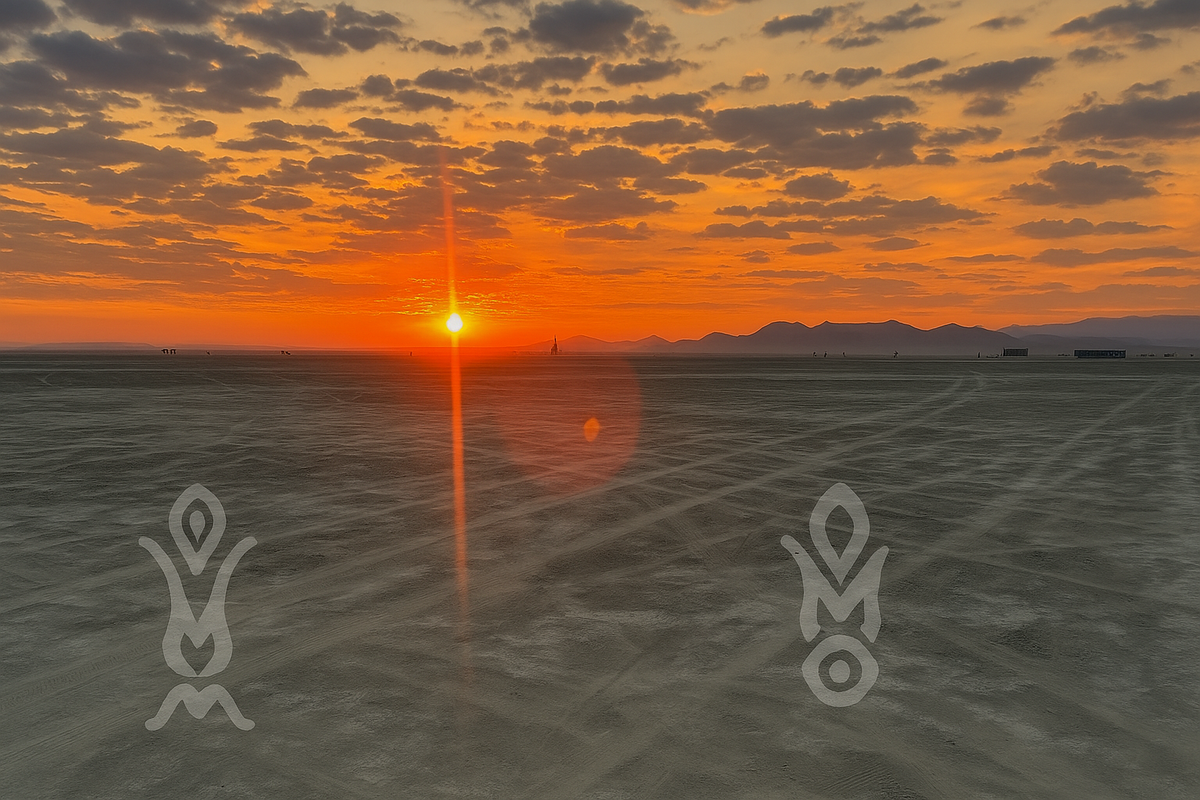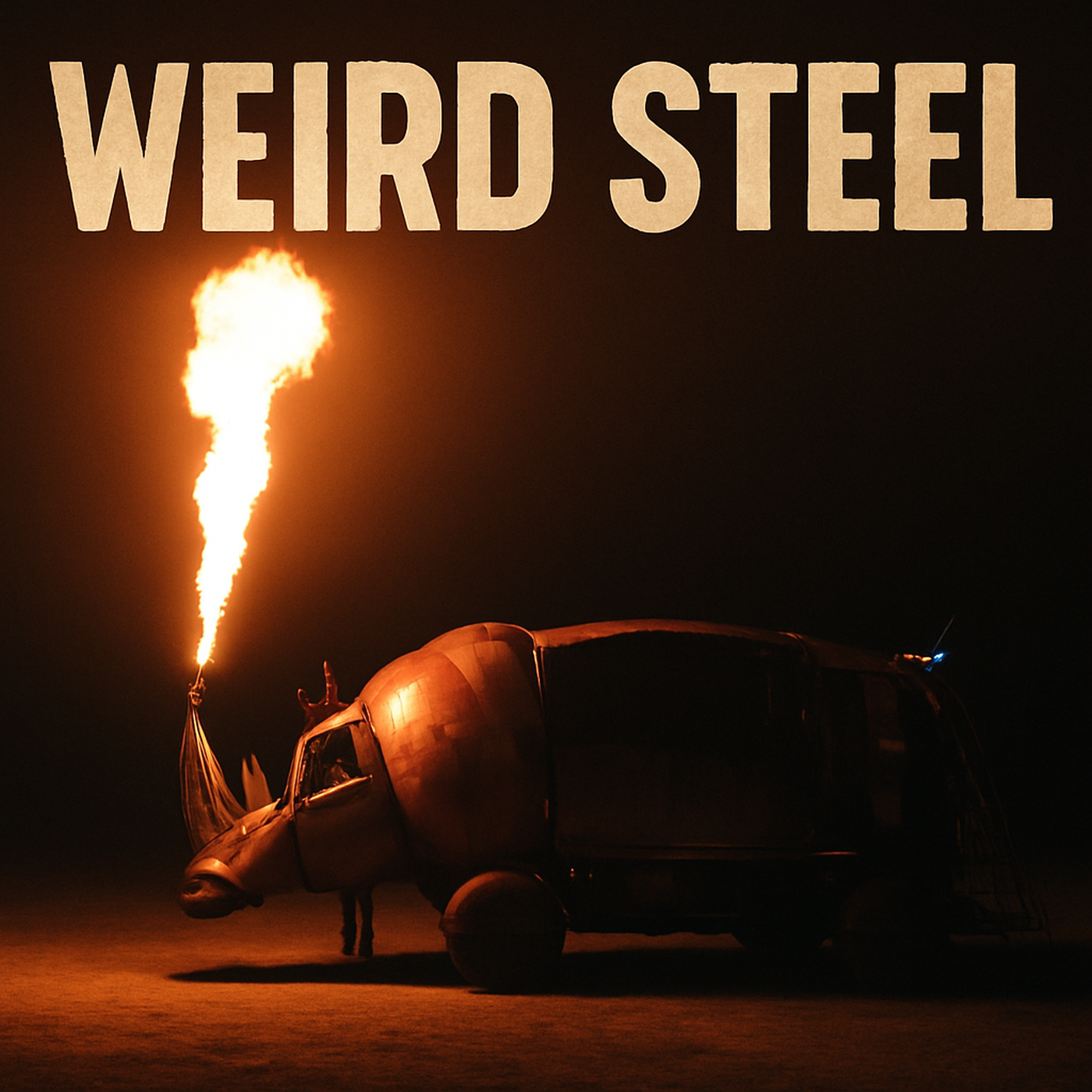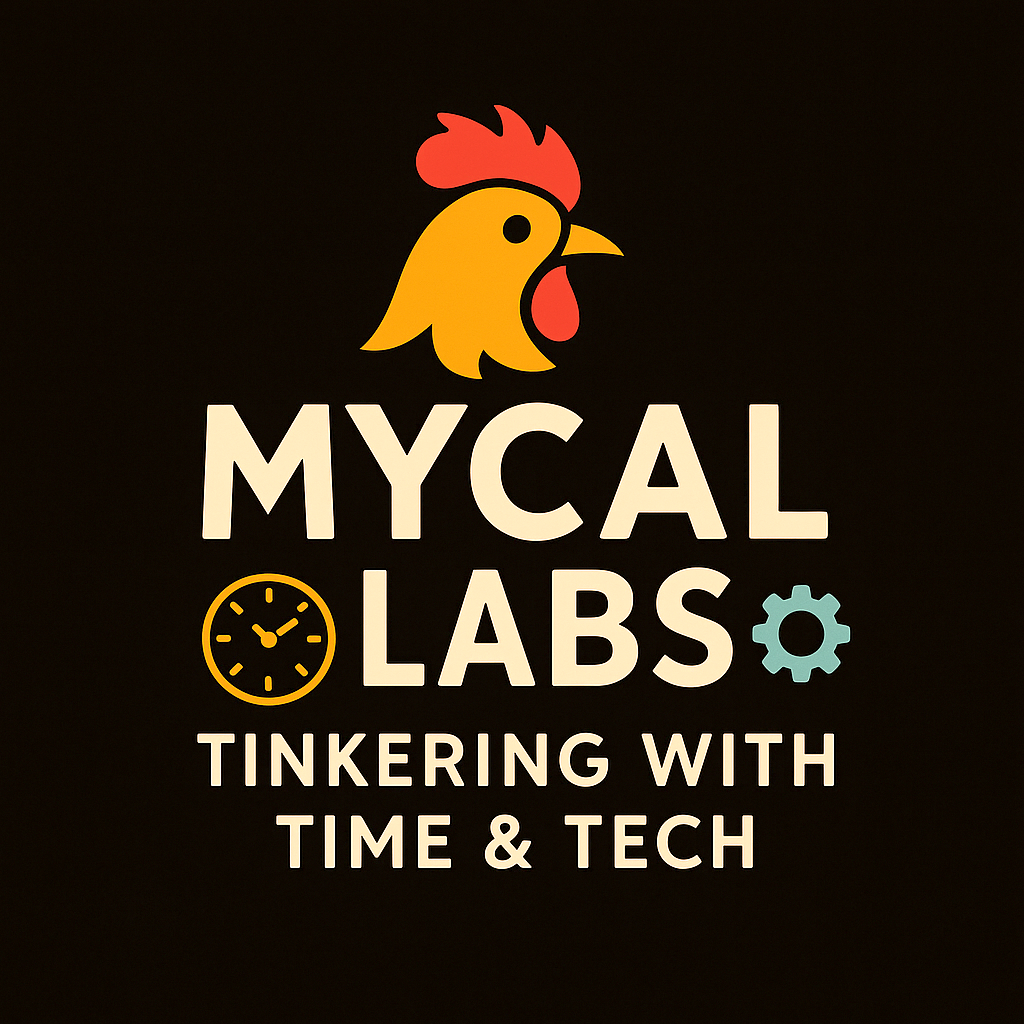The Builders’ Night — Why the Burn Belongs to the Creators
“After the Temple burn, the city quieted. What remained were the builders — the creators who keep Burning Man alive when the tourists are gone.”

Tinkering with Time, Tech, and Culture #11 — After the Burn #4

After the Temple
In a previous post I wrote about storms, mud, and even a bike-upgrade game we played out of the city’s wreckage. But Monday night, after the Temple burn, the mood shifted. It’s always quieter, more reverent — the final exhale of a city made of dust and fire. This year, though, after the Temple fell, the contrast sharpened.
The tourists and consumers packed up and fled, their RVs lining Gate Road in the endless stream of Exodus. Some of my campmates left Monday at 8 p.m. and didn’t make it home until nearly the same time I did — and I didn’t roll out until 5 a.m. Tuesday. That’s Exodus for you: hours of brake lights, dust clouds, and frustration.
I don’t do Exodus. I stay. By Monday night city is 3/4th-gone, the streets quiet, cell phones working again, the trash fence stretching bare to the horizon. No roar of art cars stacked shoulder to shoulder. Just small knots of people gathered around propane heaters, subdued beats spilling from a few surviving sound camps, fire-dancers twirling against the dark.
This was the Burn distilled: the soul of the city, revealed when the noise cleared away. And in that quiet, the divide became undeniable — the difference between those who come to consume, and those who come to create.
The Crap of the Burn
But to get here, you had to wade through the crap.
This year the divide was stark. On one side: our neighbors, Pink Heart, impeccable — MOOP-free, everything tied down, a camp you’d be lucky to land next to. Across the street: trash blowing everywhere, garbage piling up, broken tents left for the wind to scatter. Out past G, whole free camps collapsed into heaps of junk, their detritus left for someone else to clean.
And the bikes. Thousands of them, scattered across intersections and corners, blinking lights still pulsing days later like the dying heartbeat of a city already dissolving.
Then there were the cheaters. Foreign crews driving Land Cruisers and Evolution carts across the playa, gaming the handicap system or greasing palms to get permits. I watched them toss cigarette butts on the ground, snap selfies, and drive away. Others bragged about skipping the Gate line, or securing VIP seats for the burn itself.
This isn’t what the Burn was meant to be.
Creators vs. Consumers
The Burn has always been a spectrum, but this year the line felt sharper than ever.
Creators are the lifeblood: the builders, the artists, the musicians, the campmates who put their sweat into steel and rebar, LEDs and fire effects. They live the Principles, respect the art, and open themselves to connection. They give — grilled cheese, hugs, wisdom, rides, or just their time.
And it’s not just camps like ours. It’s the volunteers who hold the city together: the ones who believe in the old ways. People like Buck Bandersnatch and the crews who pound the trash fence into the desert, who raise the Greeter gates, who drive the golden spike and lay out the city grid. The DPW who build in the dust, the Rangers who walk the streets, the med tent crews who patch us up. Most of them are old school, and they still believe in the city.
Consumers? They treat Burning Man like a festival with a high ticket price. They show up to party, to take, to pose for photos, to consume what others have built. They break art and laugh about it. They believe the price of admission entitles them to the entire city.
The more the Burn tilts toward consumers, the less Burning Man it becomes. You can support a city of creators with some consumers on the edges. But a city of consumers with a shrinking core of creators? That cannot last.
The Great Filter
That truth hit me years ago, when my wife came to her first Burn. She was nervous, shaped by the myths you hear on the news — the drugs, the sex, the chaos. Sure, that exists, but you have to go looking for it. What most people actually encounter are moments of connection, art, and dust.
It wasn’t until Wednesday that I got her to explore. We ended up at a place called Lavender Hand Wash in the middle of the heat of the day. It looked empty, but it was staffed by old-school Burners — the kind with 10, 20, even more Burns under their belts. They cared for us, listened, and when my wife said how hard it all felt, one of them smiled and said:
“Yes. And if it wasn’t this tough, any asshole could come. That’s the filter that keeps Burning Man what it is.”
That line stuck. The storms, the dust, the endless tasks — they aren’t obstacles, they’re the great filter. They strip away the people who only want easy consumption and leave behind those willing to sweat, build, and endure.
The Role of the BORG
And here’s the problem.
The desert itself has a filter — storms, dust, the grind of building and tearing down. It strips away the tourists and leaves the ones who care enough to endure. But while the playa holds the line, the BORG has started eroding it.
They talk about purity, principle, and ethos. Yet they nitpick the little things — like telling us we can’t call ourselves Reared in Steel and forcing us to go by Weird Steel. As if a name is the threat.
But we were Reared in Steel. Forged from the Burn itself. Year after year we build for the playa, create the art that lights the night, weld our sweat into the skyline, and carry the Burn far beyond the trash fence. Yes, we’ve tried to make a paltry living on our name — but it’s a name built in fire and steel, earned in the dust.
While they fight us over names, they hand out crap permits so the rich can drive the playa in style. They let billionaires skip the line, wall themselves off in plug-and-play luxury, and buy VIP burn seating — all while builders grind through red tape just to get flame effects signed off.
They talk purity. But they take the dollar.
It feels backward: the ones forged in the dust get bureaucracy and restrictions, while the ones flashing cash get access and privilege.
The Builders’ Night
And yet, after the Temple, when the tourists were gone, the truth came into focus.
Monday night was quiet. The city half-vanished, but alive in its own way. We clustered around propane heaters, trading stories. Fire-spinners danced without an audience. Art cars rolled slow and subdued, their sound systems silent. It was the night of the builders, the ones who had stayed to hold the city together until the end.
That night reminded me why I come back. Not for the billionaires, not for the consumers, not for the BORG. But for the people who create. The ones who will tear down their camps clean, pack the rebar, and still be planning the next art project before the dust shakes out of their boots.
If Burning Man is to survive, it cannot belong to the consumers. It has to belong to the creators. Without them, there is no city — only dust and consumption.
Weird Steel is proof of that. Forged in fire, raised in dust, year after year we build, we burn, we give. That is the heartbeat of the playa.
And we’re not alone. Every builder, every artist, every volunteer who lays the trash fence, staffs the med tent, spins fire for no audience, or welds steel into a dream is proof too. Together, we are the current that keeps Black Rock City alive.
That is what will decide whether the Burn endures — or whether it becomes just another "festival" blown away by the dust.
Previous: Ashes and Echoes — Music & Magic — From grilled cheese to surprise concerts
